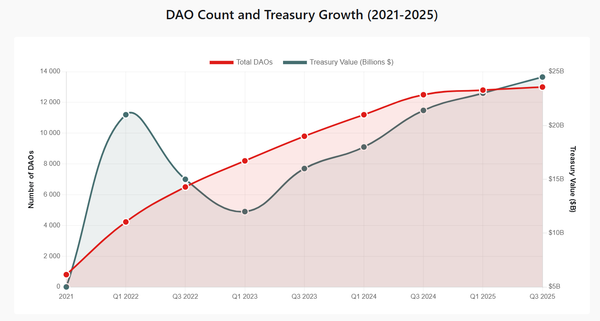Restaking and DAO Security Frameworks Pave Way for Institutional DeFi Adoption

Restaking has rapidly evolved from niche validator discussions to become central to DeFi infrastructure development. According to DefiLlama data, major liquid restaking protocols now hold over $12 billion in total value locked (TVL), with dozens of middleware services aligning their security with Ethereum's economic base layer.
While DeFi offers attractive rewards, institutional investors with multi-year horizons and regulatory constraints remain cautious. Their hesitation stems not from potential returns but from difficulties in understanding, isolating, and mitigating risks across decentralized protocols. Restaking technology offers a solution to this problem.
The technology works by allowing validators to secure new protocols using already-staked assets, creating a second validation layer. This approach strengthens middleware components like oracles, bridges, and data availability layers without requiring entirely new trust networks. It creates a modular security stack where exposure can be configured and audited per protocol.
Slashing risk has been a major obstacle for institutional staking participation. Restaking introduces slashing segmentation, where operators choose which services they secure. This transforms slashing from an unpredictable liability into a quantifiable, bounded risk that can be modeled similarly to how fixed-income traders assess default risk.
The technology enables cross-protocol exposure with less correlation than holding multiple tokens. Validators restaking into various services effectively build a portfolio of security commitments with different risk-reward profiles. This diversification makes network-level attacks more difficult by spreading economic security across multiple services.
Oracle feeds, often a point of failure in DeFi protocols, gain more reliability through restaking. Research from ScienceDirect shows that staking-based oracle models reduce manipulation risks when tied to performance incentives and slashing conditions. When misreporting can cost operators slashed Ether, the economic incentives for truthful reporting become stronger.
Institutional capital will flow into DeFi when infrastructure risk can be properly scoped and mitigated. Restaking provides a scalable primitive that makes DeFi security modular, composable, and economically aligned. As regulation develops and tokenized finance becomes more interoperable with traditional finance, restaking may serve as a trust bridge between networks and financial systems.
The security advances in restaking come as AI agent integration faces challenges in the wider crypto ecosystem. While AI agent adoption has grown 33% monthly in 2025, security and compliance issues remain major obstacles, with experts like Dr. Max Li of OORT noting that data ownership and privacy concerns currently outweigh scalability problems.





